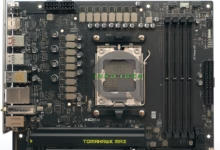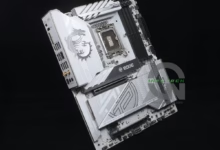
3 Ways on How to Do Website Authority and Visibility. According to research, the average click-through rate (CTR) for the top spot on Google is currently 43.32 percent. On the other hand, only 3.11 percent of searchers are likely to click on the tenth position. It means that the higher your DR, the more likely it is that Google will list it on the first page of search results. You get more visitors if your website is in one of the top spots on a SERP. You then can access more lucrative ways to monetize your website and increase ad revenue. The perception of your website by search engines and visitors is significantly influenced by domain rating.
How to Do Website Authority and Visibility
Links From High-Authority Sites
Website authority, or DA, is one of the critical factors for determining the search engine ranking of your site. It is measured by how relevant a site is to the search terms visitors type into the search engine. The higher the DA score, the more likely your site will rank well and attract more organic traffic. Some high-authority areas include Google, Apple, and Microsoft.
Domain authority is calculated using various tools and algorithms. Another method that helps websites increase their power is guest posting and content syndication using tools like https://www.vazoola.com/domain-rating-checker. Guest posting on high-authority websites will boost your link value and volume. One of the most common tools is Moz, which operates over 40 factors to determine a website’s domain authority. For example, the MozRank algorithm considers the number and quality of inbound links to a web page. Another tool used to measure domain authority is Ahrefs, which measures the number of reputable sites linking back to a web page.
Organic Links
The first step to improving website authority is creating excellent natural links to your site. Organic links consistently rank higher in search engine algorithms because of their content quality. Having a solid social media presence will not only increase your ranking but will also increase your site’s authority. However, it’s important to remember that you’ll have to spend some time and effort building your social media profiles.
Getting them from other quality websites is crucial when you start building a network of links. Social media is a fantastic tool for expanding your audience and generating natural links. In addition, you can contact business partners that have similar audiences and negotiate link exchanges. Make sure to compliment the owner of the other website and explain why you’re linking to them. After establishing a solid relationship, the other site may link back to you.
The second step in building links is earning them. You can submit your article to a site that allows guest posts. These sites usually have a page dedicated to the guidelines for guest post submissions. Some will even let links within the article, while others require payment.
Social Media
Creating a social media presence is an excellent way to improve your website’s authority and visibility. It is an essential component of effective online marketing. It is a great way to generate more traffic and increase conversions. Social media can also help you in unexpected ways. For example, you can quickly build authority when you post valuable content and interact with your audience.
Search engines use social signals to evaluate a website’s authority. The more active your social accounts are, the higher your website will rank. A comprehensive study by CognitiveSEO found that social media engagement correlates with higher search engine rankings. In addition, social media icons and links allow search engine bots to connect with your website.
Despite the potential for a direct connection between SEO and social media, there are still some questions regarding its effect on search ranking. Some studies have found no correlation between social signals and website ranking. However, it is essential to understand that the more social content you have, the more social signals you generate. In turn, more social signals mean more visibility, more backlinks, and better engagement signals. All of these factors improve your SEO.
Do you think you have other ideas about Website Authority and Visibility: 3 Ways on How to Do It? You can comment below or discuss more related to “Website Authority and Visibility: 3 Ways on How to Do It” in the CnwinTech Forum. Also, read more articles about Insurance Tech, Insurance Business Investment, or other exciting tech tips and tricks at CnwinTech.
Want to have a capable desktop PC at an affordable price for multitasks, playing games, and working? Check out and visit our store below!












